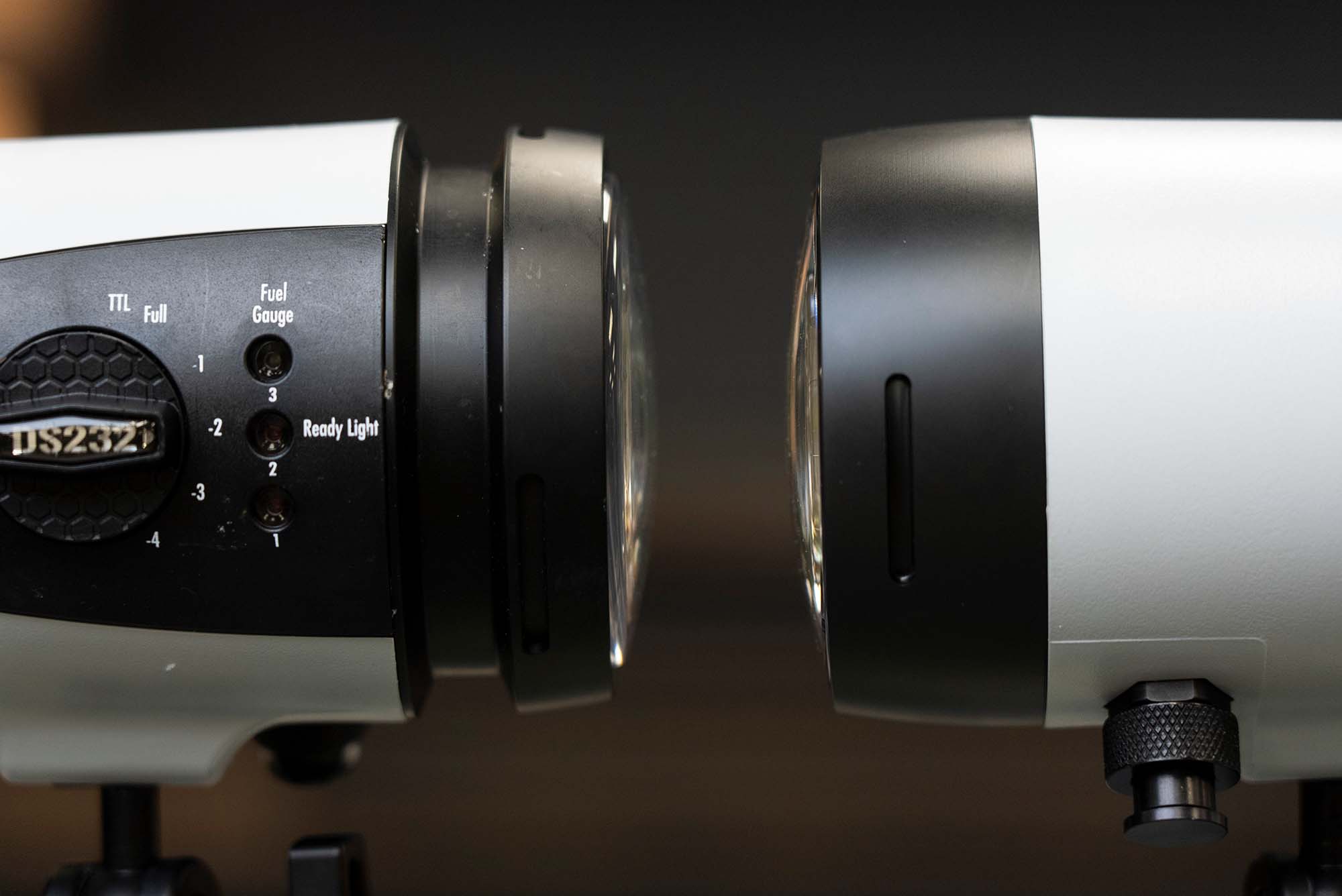By John Brigham
Don't let the small size fool you. The Canon EOS R8 has most of the features of the professional grade R6 Mark II. All of the power is packed into a compact body that's perfect for the traveling underwater photographer. Watch the video below or scroll down to learn how to set it up in the Ikelite underwater housing with one of our favorite RF lenses, the Canon RF 14-35mm F4.
The Canon R8 underwater system is compatible with a wide assortment of wide angle, zoom, and macro lenses. Check out the Lens Port Chart.
More Canon R8 Content
Canon R8 Underwater Macro Footage from Croatia [VIDEO]
Canon EOS R8 Underwater Photos & Review
Canon RF 100mm Macro Assembly // Ikelite 200DLM/D Underwater Housing [VIDEO]
Canon EF 8-15mm Fisheye // Ikelite 200DLM/D Underwater Housing Assembly [VIDEO]
Attaching the Anti-Reflection Ring to the Lens
I just got done shooting the 14-35mm midrange zoom lens in Grand Cayman and I like this lens a lot. It's on the more expensive side, but it's very fast and it's got that midrange, rectilinear look that translates well underwater and is extremely useful above the water as well.

The rings on the front of the 14-35mm lens may show up in your images without the Anti-Reflection Ring in place.
So let's go ahead and just dive right into how I assemble my gear. The first thing I do is apply the Anti-Reflection Ring # 0923.14. You'll notice writing on the front of the lens from Canon, which is a white lettering. Now, what you'll notice is if you put this behind a dome port underwater, sunlight's going to come through the dome port, reflect off of those letters, hit the dome port on the inside, then come back into the camera. That's going to show up in your image, not really something you're into. So the first thing I do is I will add the anti reflection ring to the lens itself.
To do so, I'm just going to remove it from the backing and then you're going to want to carefully put it onto the face of the lens to cover those letters.
Installing a Vacuum Valve
Let's turn our attention to the housing. What I'm going to do for my system is take the 1/2-20 plug out of the hole on the side of the housing and put in the accessory vacuum valve.
What that's going to do is let me create a vacuum inside the housing which is going to ensure that it didn't miss any o-ring seals, nothing is leaking and it provides a mechanical reinforcement of all the closing mechanisms.
To do that I take my 11/16 wrench and then loosen the plug from the hole. Once removed I'm going to keep this with my spare parts. Next take the housing, put it down on the port opening, release the lid snap locking mechanism, take the back of the housing and set it to the side for right now.

The Vacuum Kit #47012 installation is an easy process that will bring you peace of mind knowing your housing is sealed tight underwater.
Next, inspect that sealing surface of the 1/2-20 hole then take the valve, remove the nut and place the valve inside the hole. This is my opportunity to find where I want my release for the valve to be. Start threading the nut on the inside of the housing while keeping the orientation of the valve and use the 9/16 wrench to snug that down. Make sure it's snug, but you don't want to over tighten it because once that compression seal occurs, it is sealed.
Installing the Canon R8 in the Housing
Now that I have my vacuum valve installed, I'm going to remove the camera mount, which has a 1/4-20 screw and that's going to thread into the bottom of the camera. Using a flathead screwdriver, I'm going to make sure that this camera mount is snug to the camera. You don't want this to be loose on the camera because it will cause misalignment with the controls.
Before you put the camera in the housing, do make sure that you have a fully charged battery and that you have a high quality SD card installed. Check out our video to see what kind of SD card we recommend.
Let's take the hotshoe that's included, move it out of the way, and move all of your controls up and out of the way, then we can take our camera with the attached mount and simply slide it into the base in the housing. Attach the hotshoe, make sure that it's fully pressed forward, realign all our controls, and tuck your hotshoe cord out of the way.

When installing the camera mount to the bottom of your camera, ensure the mount is tightened snug to the camera using a flathead screwdriver.
Now check the sealing surface of your housing. Make sure it's free of debris and then you can grab the back of your housing and make sure that it's clean. This is a compression seal so it does not require any lubricant to overcome friction. Run your finger across the sealing surface, make sure that it's clean, free of hair and debris, same thing with the o-ring itself. Then replace the housing back and reattach the lid snap hooks making sure they're fully locked.
Adding Trigger Extensions
I shoot my systems with the dual tray and handle almost always. When I do that, I like to add extensions to both the shutter lever and back button focus.
To do that, all you have to do is simply loosen the two set screws in each lever and replace those levers with extensions. I like to put the set screw in an area that I can get to easily. When putting the levers back on over the extensions you can choose the most ergonomic position of the lever for your shooting style.

The Trigger Extension # 4077.95 makes shooting your Ikelite underwater housing with tray and handles even more ergonomic.
Adding a Dual Tray and Handles
Now that I have both of my extensions on and my vacuum valve installed, I can go ahead and put the dual tray and handle on. Take the housing flip it upside down, take your tray and handle with the buttons on the handle oriented to face you when you're using the housing.
Align the holes of the tray with the feet on the bottom of the housing, line up your two screws. Using a flat headed screwdriver, I like to get both of the screws started before tightening them down.

With the Tray and Dual Quick Release Handles # 9523.64 I have much more control over my housing. I also have two points for arms for strobes.
Installing the Zoom Gear, 14-35mm F4 Lens & Dome Port
Remove the body cap from the camera, keep that with your spare parts. Grab your lens with corresponding zoom gear, remove the back cap from the lens, make sure that it's clean on the front, align the red line on the lens with the red line on the camera mount and feed the lens with zoom gear down in. This is a friction fit against the 14-35mm lens so you're going to feel that as you go in. Once you feel the lens bayonet on to the camera body and click into place, you're ready to put the port on.
To do that, take some of the included lubricant a little bit between your finger and thumb, and then basically apply a small film of that around the port o-ring. What you're looking for is to apply a little bit of the lubricant and also feel for any debris or hair that might be there. Then you're going to take your port, make sure that that three thumb screws are backed out, not protruding to the inside diameter.
Then on the sealing surface run that same finger with lubricant across and you can feel for any debris or hair that might be there. Take the drive gear and align it so that it'll be on your left hand side and place it down over your lens, and then simply press down until it seals and then finger tighten each of the three thumbscrews. No need to use a tool here, this is just retaining the port.
Take an opportunity to turn your drive gear and make sure that your lens is zooming.

The 14-35mm lens uses the DLM 6in Dome Port 5516.17 in combination with Zoom Gear # 5515.19.
Using a Vacuum Pump to Check for Leaks
Last but not least, we'll create a vacuum inside the housing. Push the button on the vacuum valve to release the cap. Insert the barb into the vacuum pump, and then pump your housing until you get to 10mmHg on the gauge. Now, the number that you choose is not critical. What is critical is that the needle doesn't move from this number. That way you know that you're not leaking air and therefore you will not leak water.
If you have the opportunity, set this up, remove the barb, replug the valve and leave the housing under a vacuum for 15 or 20 minutes (overnight is even better). After you let it sit reinsert the barb and the needle should jump back to where you pumped it to.

We recommend diving with your housing under a vacuum. It provides a reinforcement to all the closing mechanisms.
And that's all it takes to get the incredibly compact and powerful Canon R8 underwater today! If you have more questions, reach out to our team members.
Want to dive with the Ikelite crew?
Join us in October 2024 in Little Cayman! Ikelite Staff including John Brigham, Steve Miller, and Logan Wood will be on hand to provide photo instruction and inspiration. Come to improve your imaging and make new friends at the same time! You can count on a laid-back atmosphere with fellow underwater photography enthusiasts.

John Brigham is the Vice President & head of product development at Ikelite. He was born with a flair for design and an entrepreneurial spirit as son of Ikelite founder Ike Brigham. He worked his way up in the business and is a natural fit in the R&D side of things. John dives the equipment as much as possible to test product and put himself in the "fins" of the user. You may also find him on the other end of an email or phone call when you reach out for product advice and support. When he's not underwater he's flying drones, setting off rockets, training his German Shepherd "T2", and spending time with his family.
Additional Reading
Canon EOS R8 Underwater Photos & Review
Canon RF 14-35mm f/4L Lens Underwater Review [VIDEO]
Get Creative: Unconventional Handle and Strobe Setups











![Canon R8 // Underwater Housing Assembly Ikelite 200DLM/D [VIDEO]](http://www.ikelite.com/cdn/shop/articles/canon-r8-assembly-cover.jpg?v=1701287002&width=1500)
![Canon R7 // Underwater Housing Assembly Ikelite 200DLM [VIDEO]](http://www.ikelite.com/cdn/shop/articles/Canon_R7_Assembly.jpg?v=1700084577&width=2000)
